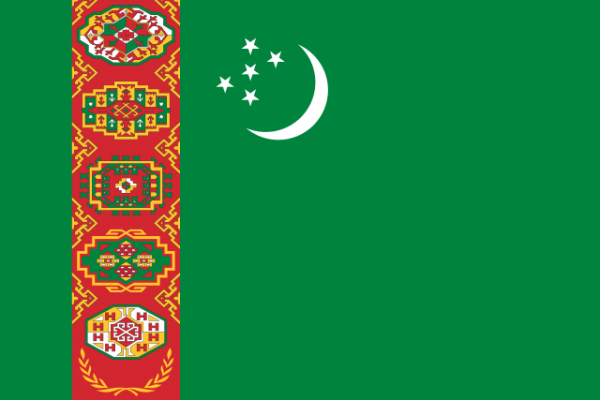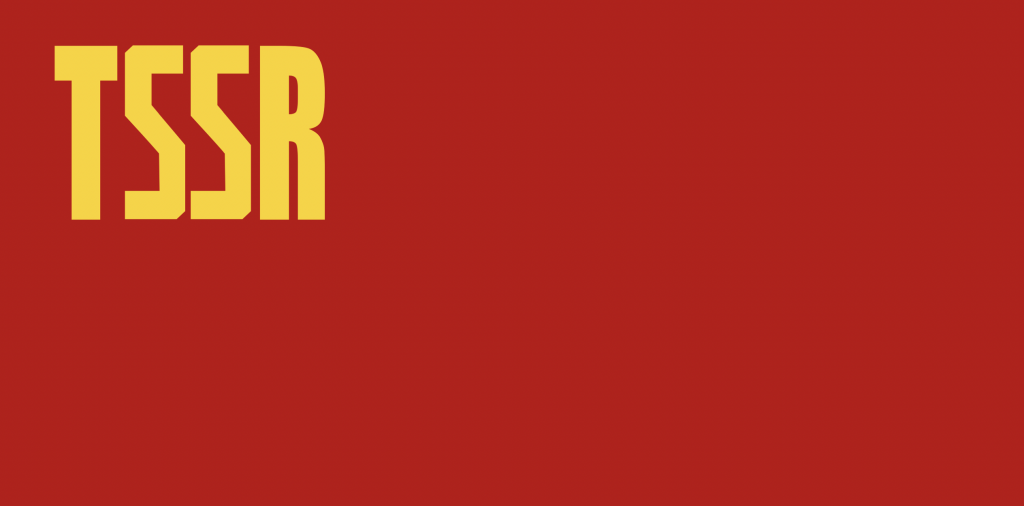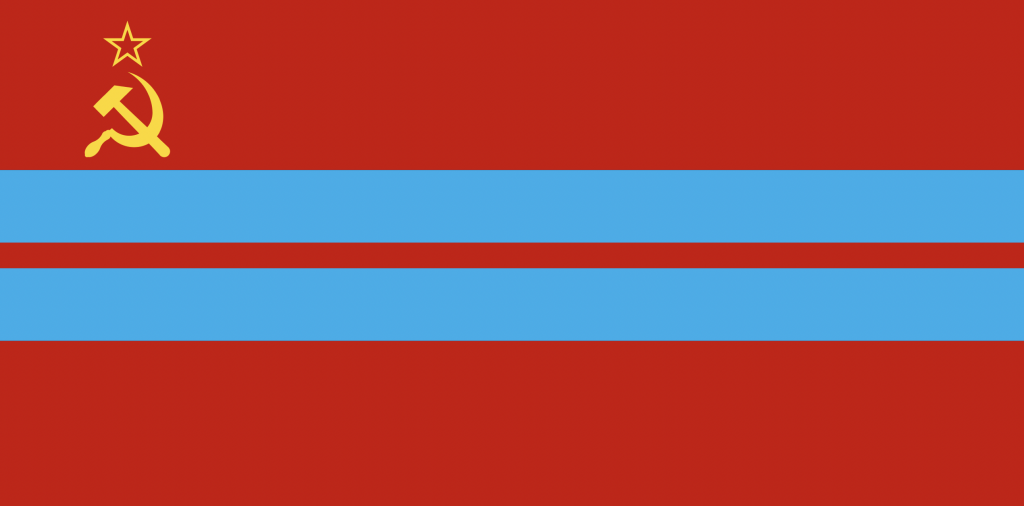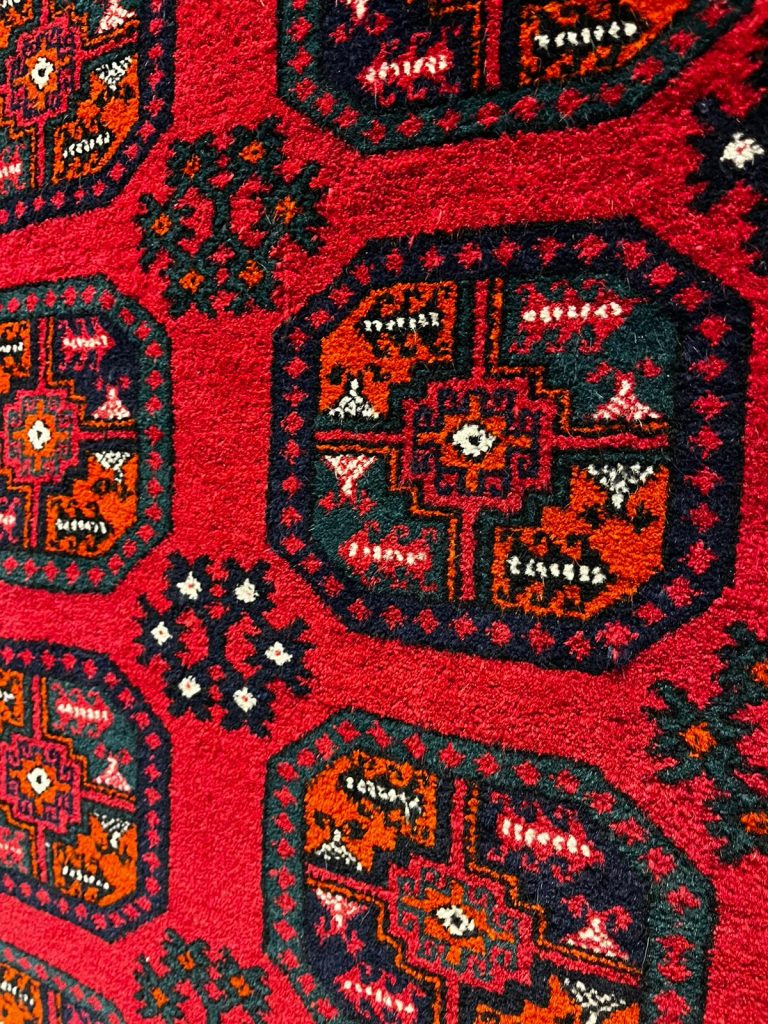Central Asia certainly stands out for its distinctive features, from post-Soviet bureaucracy and rugged landscapes to the historical significance of the Silk Road. Yet, one often-overlooked aspect is the uniqueness of its national flags. As the only flag in the world to feature a carpet, the flag of Turkmenistan is especially notable for having a distinct design!

History of the Flag of Turkmenistan:
With the modern-day territory of Turkmenistan being incorporated The flag of the Turkmen Soviet Socialist Republic (Turkmen SSR) underwent several changes during its history in the Soviet Union. The earliest versions, starting in the 1920s, featured text in Arabic script to identify the republic, reflecting the Turkmen language’s use of that script at the time. This text evolved through various scripts, including Latin and later Cyrillic, as Soviet language policy changed.
The early flags typically had a red background with Soviet symbols like the hammer and sickle, along with lettering that represented the name of the republic.


In 1953, a final version of the flag was introduced. It featured the standard Soviet design, a red field with a golden hammer and sickle and a star in the upper canton. Its distinctive feature of two blue stripes across the flag each symbolized the Amu Darya and Syr Darya rivers. Not only were they the two main rivers in the state, but were essential to support life, agriculture, and (crucially) the cotton industry in an otherwise barren desert republic.
This design remained in use until the collapse of the Soviet Union in September 1991, when Turkmenistan declared independence. There was a brief period, immediately afterwards when the Soviet flag remained in place. However, a council was comprised to design a new flag, which was unveiled by President Niyazov in March 1992.
Since then, the only slight modification came in 1997, when a golden olive branch was added to the bottom of the carpet motif. This was to signify the country’s recent adoption of its “permament neutrality” status, which you can read more about here.
Symbolism of the Flag of Turkmenistan:
The flag of Turkmenistan is the only one in the world to feature images of carpets on its flag, highlighting the cultural and historical importance of carpets in Turkmen society.
The five carpet patterns running down the left-hand side symbolize the five major tribes of Turkmenistan, the Teke, Yomut, Saryk, Chowdur, and Ersari. This reflected an effort by the country’s first president, “Turkmenbashy” Saparmurat Niyazov, to revive a sense of national identity after the Soviet Union’s collapse. This emphasis on cultural roots was designed to solidify a sense of unity and national pride, transitioning away from a Soviet identity.
Carpets play a significant role across the country, being prominently displayed at official events, featured in museums, and celebrated through an annual national festival. In Ashgabat, the capital, the symbols of the five tribes are visible everywhere, from government buildings to public spaces.

The flag also incorporates Islamic symbols, despite the country’s turbulent religious history during the Soviet era. The crescent moon on the flag acknowledges the nation’s Islamic heritage, while the five stars represent the unity of Turkmenistan’s ethnic tribes as well as the Five Pillars of Islam.
The crossed olive branches below the carpet motifs symbolize the country’s “status of permanent neutrality,” much like the olive branches on the United Nations flag.
The flag of Turkmenistan also holds an interesting record. In Ashgabat, the flagpole bearing the national flag ranks as the fifth tallest flagpole in the world.
Feel inspired to visit Turkmenistan?
We’ve been offering tours to Turkmenistan for over a decade, so through the years we have gotten to know the country very well! All of our trips take you to see the national flagpole, and both the national flag and other Turkmen symbols are ubiquitous across the country.
Depending on your budget, dates, and wants, you may choose to join one of our group tours, or else we can help you orgniaze a private tour. Either way, we recommend checking out our Turkmenistan page here, or getting in contact with us if you have any questions!





